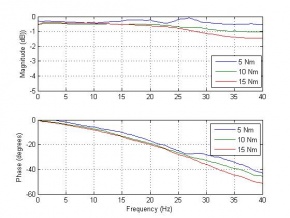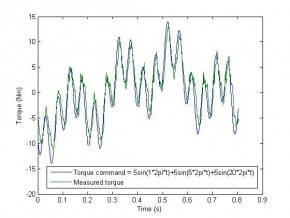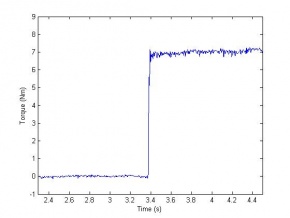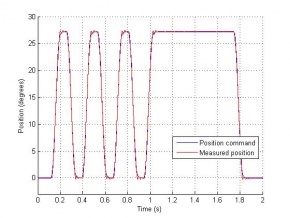DDRA - Double Differential Rheological Actuator (patent pending)
Description
Robotic systems are increasingly moving out of factories, stepping into a dynamic world full of unknowns, where they must interact in a safe and versatile manner. Traditional actuation schemes, which rely on position control and stiff actuators, often fail in this new context. There have been many attempts to modify them by adding a full suite of force and position sensors and by using new control algorithms but, in most cases, the naturally high output inertia and the internal transmission nonlinearities such as friction and backlash remain quite burdensome.
The proposed actuation scheme addresses many of those limitations. The DDRA uses a differentials mechanism and two magnetorheological brakes coupled to, for example, an electromagnetic motor. This configuration enables the DDRA to act as a high bandwidth, very low inertia, very low friction and without backlash torque source that can be controlled to track any desired interaction dynamics. The advantages include safety and robustness due to extreme backdrivability and a lot of versatility in interactions. In a more traditional context, the actuator’s low inertia, eliminated backlash and reduced nonlinearities allow for greater accelerations and a more precise positioning, thus improving productivity and quality.
Videos[edit]
Download QuickTime for these videos.
- Interaction control (December 2008)
- Prototype 1 (June 2009)
- Proof-of-concept Prototype 0 (December 2008)
Status[edit]
Prototype 1
Nominal power
|
90W |
Nominal torque
|
11 Nm |
Maximum torque
|
20 Nm |
Inertia
|
1.2e-4 kg.m^2 |
Power Rate
|
1025 kW/s |
Torque bandwidth
|
>40 Hz (limit of test)
|
Maximum speed
|
160 RPM |
Reduction ratio
|
33:1 |
Dimensions ratio
|
90 dia X 137 mm |
Weight
|
2.4 kg |
Force control:
Position control:
Interaction control:
Simulation of a spring
|
Simulation of a wall
|
|
|
Publications
Fauteux, P., Lauria, M., Legault, M.-A., Heintz, B., Michaud, F. (2009), “Dual differential rheological actuator for robot interaction tasks,” IEEE International Conference on Advanced Intelligent Mechatronics. Recipient of Best Student Paper Award. (pdf)
Team[edit]
- Philippe Fauteux
- Benoit Heintz
- Marc-Antoine Legault
- Matthieu Tanguay
- Michel Lauria
- Dominic Létourneau
- François Michaud






